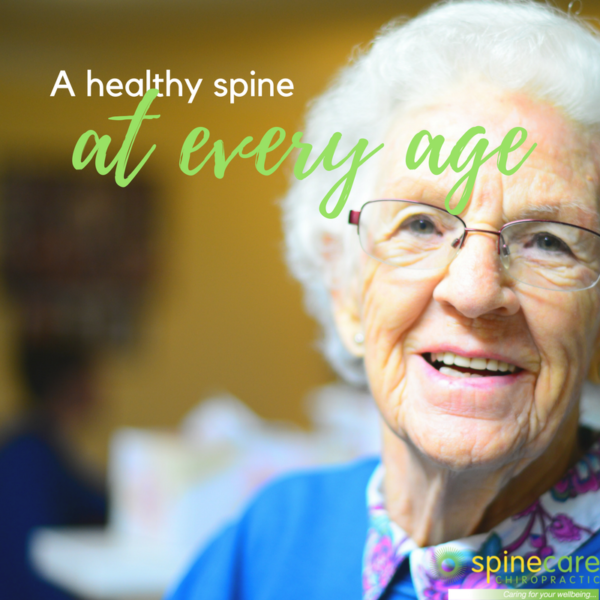The four pillars of a gracefully ageing spine

How do you feel about ageing?
As a culture, we’re averse to wrinkles – enlisting superfoods, surgeries and skin creams backed by dubious science to slow the passage of time. But despite our best efforts (and serious financial investment) we each get a day older, every 24 hours.
Growing old hurts… doesn’t it?
Pain, injury and loss of mobility are considered inevitable – even expected – parts of the ageing process. It’s only a matter of time before your back goes and that errant piece of lego on the floor proves out of reach.
In fact, lower back pain is the number one contributor to functional limitations and loss of mobility in the elderly.
But at Spinecare, we’d rather take a proactive approach to ageing – helping our people feel as fit and feel-good as possible with every passing year. An ounce of prevention is worth a pound of cure, and proper care of the spine, nervous system and body can delay, prevent or profoundly improve age-related decline.
What’s ‘normal’ ageing?
Let’s approach this question with ‘informed positivity’, staying upbeat, empowered and well-educated – enough to take control of the things we can change in the body, while accepting those which we cannot.
It’s true – things do change with age.
- The spine loses thickness and elasticity, making it more susceptible to wear, tear and injury.
- Discs decrease in hydration and collagen, receiving fewer nutrients and changing in shape.
- Muscles that support the spine, weaken, and ligaments may undergo a process called ossification in which calcium deposits lead to hardening and stiffness.
These changes make acute or chronic injury more likely, as well as lower back pain, stiffness, decreased range of motion and poor posture.
Common age-related conditions include disc degeneration, spinal stenosis, deteriorating joints and osteoporosis. All the more reason to enact proactive spinal support and stay mobile – starting now.
Top habits for gracefully-ageing spines
-
Don’t smoke
We’re not here to hit you with the same old no-smoking lecture – the pitfalls of every puff are now universally known. But the spine isn’t commonly associated with the dangers of smoking, even though smoking may itself cause back pain, as well as decreased: bone density, circulation to spinal discs, collagen levels and spinal nerve function. Getting help to quit smoking is a wonderful step in the direction of a limber lumbar for life.
-
Maintain a healthy weight
Even though weight-bearing exercise is essential for keeping your skeleton healthy, obesity can put pressure on the spine in a number of ways. Poor posture combined with increased body weight is a recipe for back problems. A lack of exercise can also weaken the muscles in the core and lower back, causing the pelvis to tilt forward and trigger pain.
-
Keep moving
In the same way that being sedentary weakens the muscles important for maintaining spinal health, regular exercise (especially professionally-prescribed strength training) can strengthen them. Thick muscles on either side of the spine are important for supporting it, as well as cultivating impressive abdominals for shielding the lumbar spine from degenerative changes. Coupled with gentle, everyday exercise like walking, swimming, yoga, bike riding and tai chi, movement is the perfect preventative medicine for your spine.
-
Enjoy a delicious, wholefoods diet
The reasons for adopting a healthy diet are too numerous to count – but they start with deliciousness and result in a better body all ‘round. For the spine? Eating a diet full of fibre and low in processed food helps to regulate weight – see #2. Pigments (antioxidants) from colourful foods like fruits and veggies may protect the spine from oxidative stress, and also reduce inflammation. Plus, nutrients like phosphorus, calcium and vitamin D are essential for bone health, repair and maintenance.
Though simple, these four pillars of preventative health can help you avoid accelerated spinal ageing and enjoy getting older for what it is: a chance to revel in the wisdom, experience and stories you’ve accumulated over a lifetime – walking stick optional.
We’ve written lots more about spinal health – why not take a read?
6 unexpected ways poor posture (negatively) affects your life
A decidedly un-Australian way to protect your spine
Get to know your spinal anatomy. (In a way that won’t send you to sleep!)

